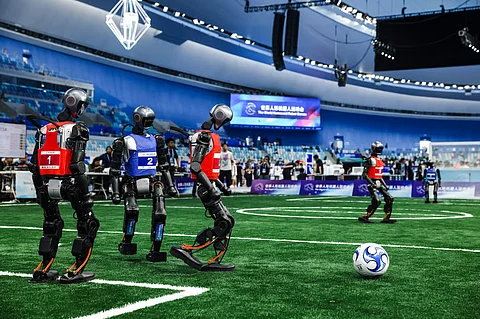

China hosted the world’s first humanoid robot games, pitting machines against each other in contests ranging from basketball to kickboxing, in a showcase of the country’s ambitions in the fast-growing robotics sector.
The event, titled World Humanoid Robot Games, was held in Beijing last week. More than 500 bipedal robots in 280 teams from 16 countries, including Japan, Germany and the US, competed in 26 sports.
The games began on Friday morning with a 1,500-metre race. Hangzhou-based Unitree Robotics, regarded as a rising star in China’s robotics industry, emerged the winner with its H1 humanoid robot taking first and third place. Beijing rival X-Humanoid’s Tien Kung Ultra, which earlier this year won the world’s first half-marathon featuring both humans and robots, finished second.
The H1, priced at $90,526, is the same model that performed the Chinese folk dance Yangge during this year’s Spring Festival Gala. Other competitions on Friday included football, kickboxing and dance performances, as well as basketball matches featuring robots built on limited budgets by university teams. A group from Shandong Jiaotong University in Jinan, for example, fielded a machine developed over a year after securing third place in Robocon, a prominent student robotics contest.
Despite the spectacle, the limitations of humanoid technology were on display. Some machines failed to start the opening race, others could not finish, and one robot from Shandong-based Yobotics lost an arm in a fall but managed to limp across the line to applause. In the football match, a tumble by one player triggered a pile-up that required human staff to clear the field.
Even so, organisers said the games were designed as “test fields” to push the boundaries of robots’ decision-making, balance and interactive skills in complex environments. These capabilities, they said, could be applied later in domestic settings and industrial production.
“This is not a show,” one official stressed. “It is about testing limits, systems and collaboration – and China has the supply chain and infrastructure to bring these robots into real-world use.”